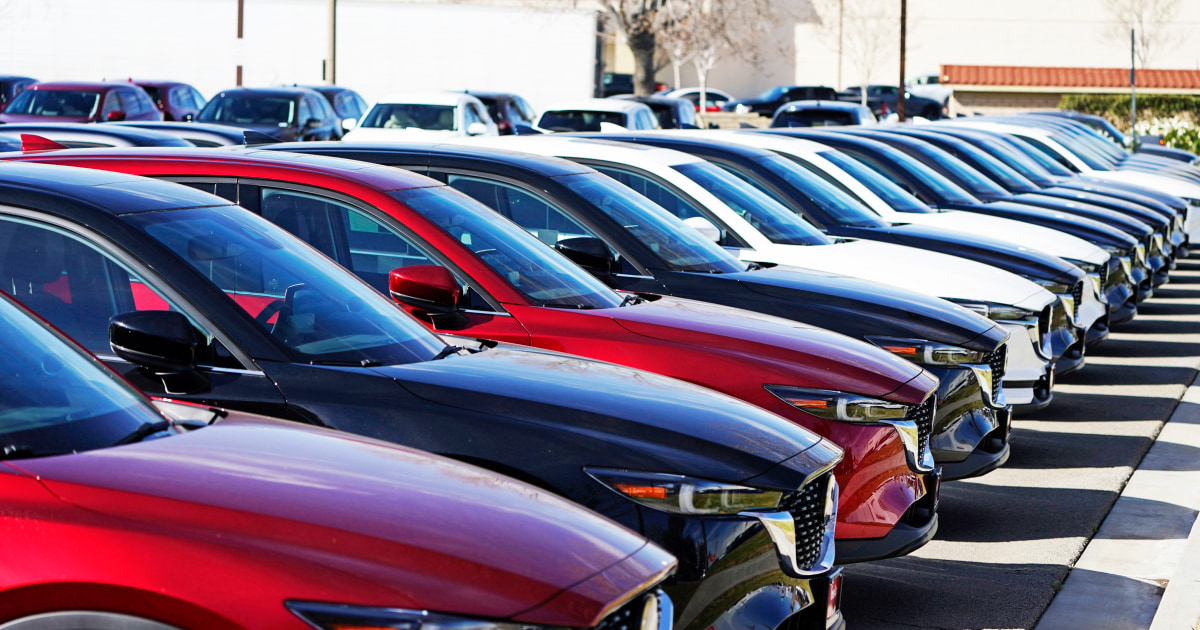
Car consumers can take their pick of what’s to blame: the Covid-19 pandemic, a shortage of semiconductors, blockades at the Canadian border, a fire onboard a ship full of Volkswagens and Porsches, or all of the above. America’s new car lots are unusually bare.
And that means manufacturers and dealers have all but abandoned the rebates and incentives normally used to draw customers into showrooms. If anything, dealer markups are becoming the norm. More than 80 percent of new vehicle buyers paid more than sticker price in January — a nearly 30-fold increase from a year ago, according to a recent analysis by Edmunds.
“Think back two years ago,” said Dave Gardner, executive vice president of U.S. operations for Honda. “When did you ever hear of cars selling MSRP? Now that’s the start of the conversation.”
The automotive retail landscape has undergone a radical shift since the pandemic struck. During the spring of 2020, the North American vehicle manufacturing network shut down for three months. Initially, that didn’t seem like much of a problem because almost no one was buying new vehicles while the country went into lockdowns. But demand rebounded far faster than anticipated, as dealers began taking orders online and delivering vehicles to buyers’ homes.
Once plants reopened, manufacturers went into maximum overtime. Then, they got hit by an unexpected shortage of semiconductors used by the score in modern vehicles. According to research by AlixPartners, global vehicle production fell 10 million short of initial forecasts in 2021, with automakers losing about $210 billion in sales.
Currently, U.S. dealers have barely 1 million vehicles on their lots, less than a third of what would be normal this time of year. Yet, General Motors, Ford and a number of other manufacturers have reported strong earnings for the year, as have key dealer groups like AutoNation.
With new autos in short supply, it’s become a seller’s market. Rebates, low interest loans and other incentives that were an industry norm over the past four decades have all but vanished, especially on popular models. Dealers are adding “adjustments” that can run above $10,000 on vehicles such as Ford’s hot-selling new Bronco, the Chevrolet Corvette and even the Kia Telluride.
“The fact that an overwhelming majority of consumers are paying above sticker price would have been unthinkable even just a year ago,” said Jessica Caldwell, executive director of insights for Edmunds. Yet that’s precisely what the data tracking service discovered.
Analyzing sales reports for January, Edmunds found 82.2 percent of new buyers paid an average of $728 above the manufacturer’s suggested retail price. Only 2.8 percent of buyers paid above the sticker price in January 2021, and a mere 0.3 percent compared to the same month in 2020.
The rise was “in part driven by affluent consumers being willing to shell out more cash to get the vehicles that they want,” Caldwell said, “but there’s also a vast population of individuals who are being forced to do so simply because they need transportation and have no other choice.”
Only six brands saw average transaction prices land below sticker last month: Alfa Romeo, BMW, Lincoln, Mini, Ram and Volvo. At the other end of the spectrum, Cadillac dealers tacked on the biggest markups, an average of $4,048, according to Edmunds. And luxury dealers weren’t the only ones taking advantage of weak inventory. Kia customers paid an average of $2,289 above sticker last month.
Combine the lack of discounts and a surge of dealer markups on new vehicles, and buyers are being hammered. Average transaction prices — the amount a buyer actually pays before getting behind the wheel — hit a record $47,243 in December, according to Kelly Blue Book. The average transaction prices did drop 1.8 percent, to $46,404, in January, the service reported, but that largely reflected a decline in luxury car sales.
The surge in dealer markups has generated plenty of backlash from consumers, and Caldwell warned that buyers have long memories and may switch brands the next time they go to trade in their vehicles.
That’s led several automakers, notably Ford and General Motors, to begin pressuring dealers to stick with the MSRP. The problem they face is that state franchise laws limit a manufacturer’s ability to control what a dealer charges. But they aren’t entirely without tools. Some automakers are advising dealers to ease up — Ford CEO Jim Farley confirming that retailers who refuse could find it harder to get the vehicles they want from the factory.
Even so, buyers shouldn’t be hopeful of a return to the days when they could expect lucrative factory incentives and demand dealer discounts.
In recent months, General Motors CEO Mary Barra has said she doesn’t expect the automaker to put nearly as many vehicles into dealer inventories as it had in the past. Other manufacturers have echoed that strategy, which could bring a long-term shift in the balance of power.
With the semiconductor shortage expected to stretch through the end of this year, tight inventories will work in the industry’s favor. The longer-term question is what happens if the economy weakens and the consumer demand drops off. That could put buyers back in control.
Source: | This article originally belongs to Nbcnews.com









